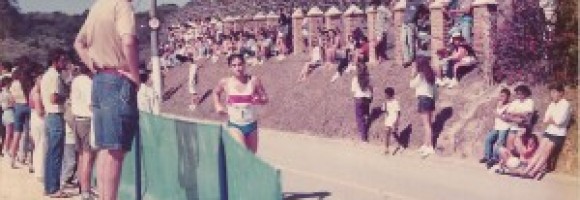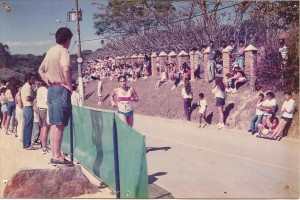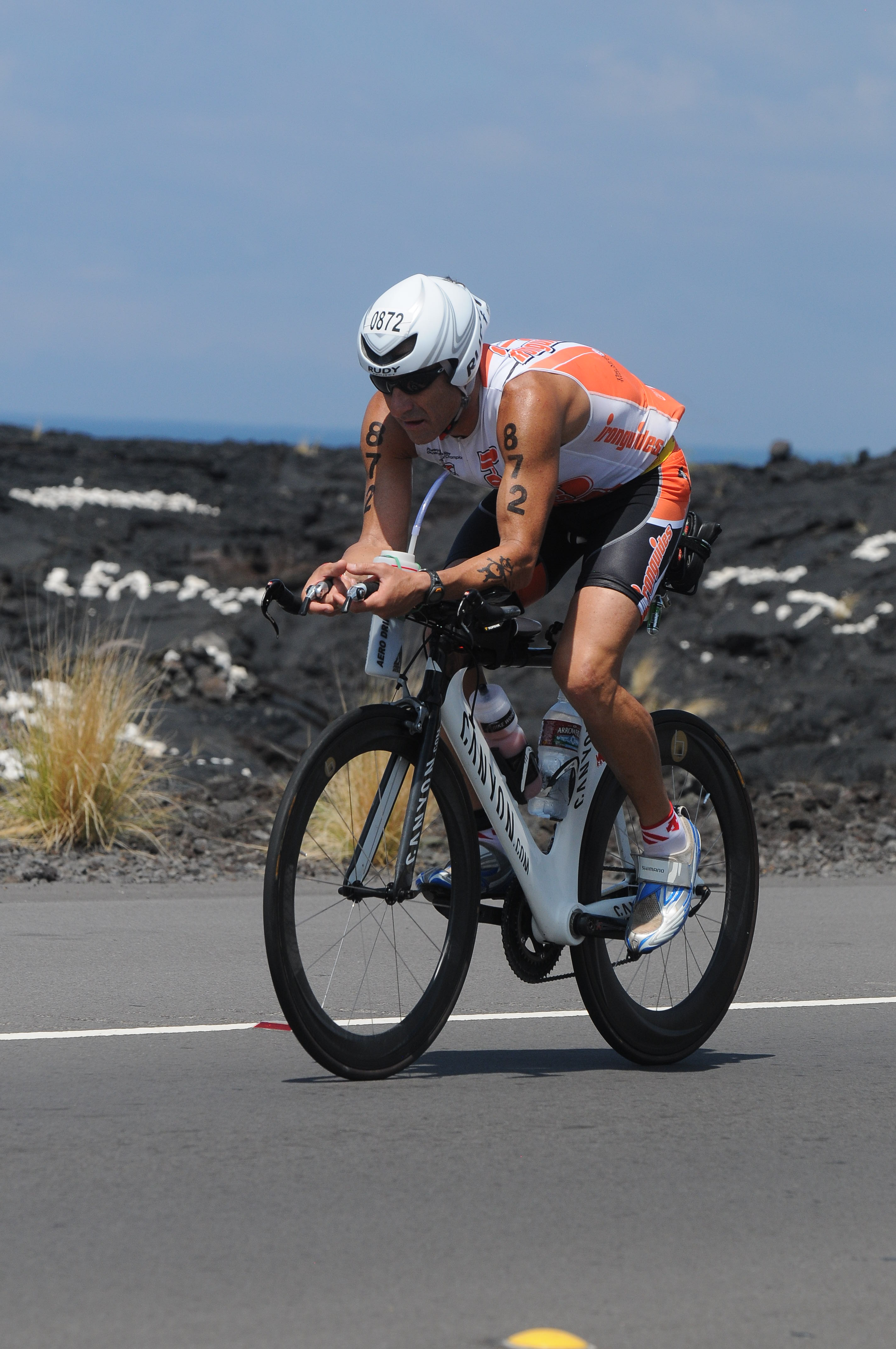Coaching Tips: The Abu Dhabi International Triathlon
The Abu Dhabi International Triathlon is fast becoming a must on the triathlon circuit. For professionals the large prize money and the opportunity for an early season test are very attractive.
For age groupers, the unique distances (Super Sprint-750m/50km/5km; Short Course-1500m/100km/10km; and Long Course-3km/200km/20km) and very unique destination are attracting large numbers.
In its fifth year with the stunning Emirates Palace as the background for the swim, the YAS Island Formula One Circuit as the turnaround for the bike, and the Persian Gulf as the backdrop on the run, this event offers truly a stunning course and is sure to be added to an ever-increasing number of race calendars as word gets out.
While the course looks straight forward at first glance, the unique distances and always-difficult weather conditions can make this race very challenging. Triathlons are supposed to be hard and inspirational, and this race is certainly both. Athletes have faced high winds and temperatures in the previous years, with the mercury climbing to the high 30s (Celsius) by the time athletes started on the run.
With very little shelter from both the sun and the wind, and blowing sand, athletes who were able to cross the finish line at the end of the day truly felt they had accomplished something special.
Swim (750m/1500m/3km)
The swim for the ADIT begins and ends on the white sand beach of the Emirates Palace. With 1.3km of private beach and over 1kg of edible gold used every year, it is easy to forget the long day you have ahead of you.
Long-course athletes swim 2 laps of the counter-clockwise rectangular swim. With athletes going off in waves, this is one of the most ‘comfortable’ swim starts you will find in a race this size. Long-course athletes, however, re-enter the water after a short beach run and will have to navigate their way through the later-starting and slower swimmers from the short course and super sprint waves.
With water temperatures generally hovering around 23 degrees at this time of the year, all the talk leading up to the race focused on whether wetsuits would be allowed, or not. In the end, race organizers decided to ban wetsuits for the professionals but allow them for age groupers. This was a welcome decision. The buoyant salty waters of the Persian Gulf combined with the wetsuit made for a fast swim.
Swimming in a wetsuit, although it feels generally easier due to the extra flotation the suit provides, is harder on the shoulders. Training in a wetsuit is recommended to strengthen your specific swimming muscles and to get used to the feel of the suit and the extra strain on the shoulders; however, this is not always an option for everyone. A great way to simulate wetsuit swimming in the pool is to swim with paddles and pull-buoys. Long sets broken into shorter intervals with the pull-buoy give the feel of the extra buoyancy of the wetsuit and the paddles add the extra strain on the shoulders.
A very good set to prepare for a wetsuit swim is:
Warm-up: 300m easy
28 X 100m swim as:
3 hard, 1 easy with 15s rest between intervals and an extra 30s rest after every 4th.
Cool-down: 200m easy
This session is about developing swim strength, improving your position in the water and developing an ‘open water’ swim stroke. The main goal of this set is to hold your best time that is sustainable for the entire set. Don’t destroy yourself aerobically.
Bike (50km/100km/200km)
The bike course is a 2-1/2 out-and-back course with athletes completing a lap of the world famous YAS Island Formula One Race track at the turnaround of lap 1 and lap 2. The bike course is almost pancake flat with the only elevation change coming as cyclists cross Khalifa Bridge connecting Abu Dhabi Island with Saadiyat Island and again when crossing the small bridge connecting Saadiyat Island with YAS island. Ironically the flat nature of the course is one of the things that make it so difficult. In addition to the heat and potential for high winds, the flatness of the course means that athletes are time-trialing the entire distance. This means no downhills to rest and no built-in opportunities to get out of your aerobars to stretch or change up your cadence. To be successful on this course, athletes need to be prepared to sit in their aerobars and push a big gear for the duration of the ride.
The best training for this course is to do negative-split rides on a flat course in the aero position pushing big gears.
Long ride session:
3-4 hours Negative Split B.R.O Ride—that is 3 to 4 hours in Big Ring Only.
After a 15-minute warm-up, shift to your big ring. Head out easy, staying in the aero position and keeping your chain in the big ring for the entire time. Bring it home a little harder, but still under control. Keep the cadence down and push the big gears!
Another great workout that can be done on the road or on the trainer is the weekly negative-split ride as:
20min easy
20 min moderate
20 min hard
Run (5km/10km or/20km)
The run course is 2 laps for the long course athletes, taking them from transition 2 on to the Corniche running path along the Persian Gulf to the turnaround on a point in the middle of the bay. Like the bike course, the run course is flat. Flat and, more often than not, very hot! Like in cycling, a flat course also brings its own challenges for the run. However, with the long course being only 20km, you can take a bit of a risk and go for it on the run if you have anything left.
As with all triathlon runs, it is important to focus on a high stride rate. The treadmill is a great tool for this, but this workout can also be done on the road or track:
Warm-up: 15min with 4-5 strides towards the end
Main set: 8 X {1min fast at 96 steps per minute, followed by 4min steady at 90 steps per minute}
Cool-down: 10min easy
Focus on high stride rate and running form during both the ‘hard’ and ‘steady’ sections. During the ‘steady’ section, runners often drop their stride rate too much and lose form. It is important during this portion of the set to focus on keeping the stride up and running with good form.
The final point to pay attention to when preparing for the ADIT is heat acclimation and hydration. This race can get very hot and it’s important for athletes who don’t train in hot climates to turn up prepared for the heat. Here are some tips on ways cool-weather athletes can prepare themselves for the Abu Dhabi heat. The most important thing is to get used to being uncomfortably hot for at least one to two hours of training per day in the month leading up to the event:
- Use layers to stay warmer than normal. Use wind-resistant clothing on the bike.
- Wear a windproof layer to surround your body in a shell of humidity.
- Wear tights sooner than you normally would.
- Wear long gloves and a headband.
- If training on the trainer or treadmill, turn off the A/C and fan.
- Try to do as much training as you can during the heat of the day.
It is also important to begin getting your body used to being hot when you’re not training:
- Avoid using the air conditioning during the month leading up to the race.
- Turn up the heat in your car, at home, and in your office.
- Wear an extra layer of clothes or a sweater.
Once you arrive in Abu Dhabi prior to the race:
- Avoid (as much as possible) the air conditioning.
- Do your training during the heat of the day and at times that will be similar to race day.
- Finally, the day before the race, AVOID both the sun and exposing yourself to extreme temperatures. Do your final sessions during the cooler part of the day or inside if necessary.
- And, finally, hydrate and replenish during this acclimation phase. Make sure you are paying attention to replacing fluids and electrolytes your body is losing through extra sweat due to the increased training temperatures.
The Abu Dhabi International Triathlon is a fantastic event and will be a memorable experience. Hopefully, these tips give you a good idea of the challenges you will face and help make your day a superb one.
ironguides is the leading Lifestyle Facilitation company for athletes of all abilities. We provide coaching and training services, plans and programs, as well training education, health and fitness products to help you learn and live a healthy lifestyle. Come get fit with one of our monthly training subscriptions, event-specific training plans, coaching services, or a triathlon training camp in an exotic location! ironguides also provides Corporate Health services including Corporate Triathlons, Healthy Living retreats and speaking engagements. At ironguides, your best is our business!
Train with ironguides!
Personalized Online Coaching: Starting at USD190/month
Monthly Training plans (for all levels, or focused on one discipline): Only USD39/months
Event based training plans:
Sprint Distance (USD45 for 8-week plan)
Olympic Distance (USD65 for 12 week plan)
Half Ironman (R$95 for 16-week plan)
Ironman (USD145 for 20-week plan)
X-Terra (USD65 for 12-week plan)
Running Plans (10k, 21k and 42k – starting at USD40)





Recent Comments